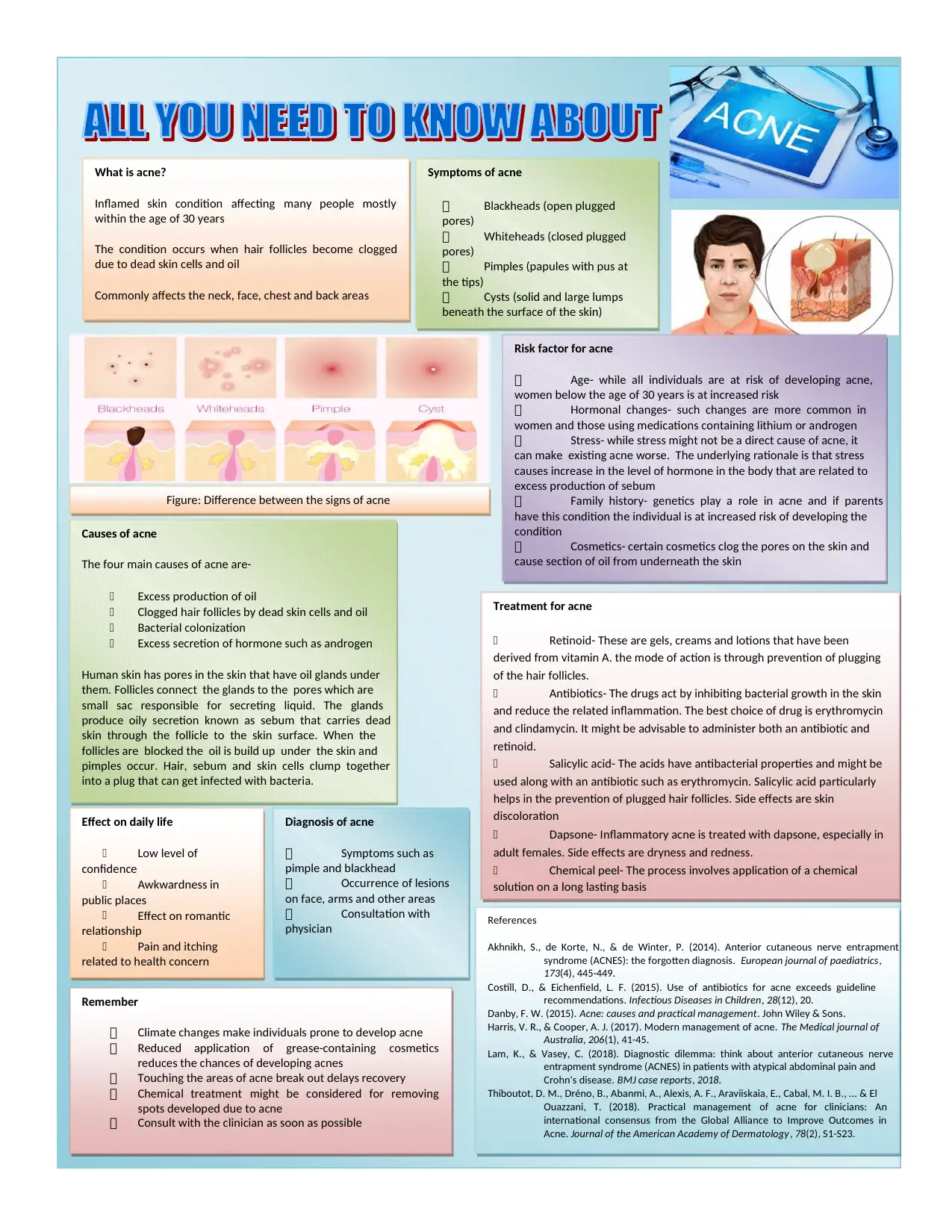BIOH12008 Human Pathophysiology: Acne - Causes, Symptoms, & Treatment
VerifiedAdded on 2023/06/09
|1
|845
|314
Report
AI Summary
This report provides a comprehensive overview of acne, a common inflammatory skin condition characterized by clogged hair follicles due to dead skin cells and oil. It outlines the symptoms of acne, including blackheads, whiteheads, pimples, and cysts, and identifies risk factors such as age, hormonal changes, stress, family history, and cosmetics. The report explores the primary causes of acne, which include excess oil production, clogged hair follicles, bacterial colonization, and hormonal imbalances. It also discusses the impact of acne on daily life, including its effects on confidence, social interactions, and romantic relationships, as well as the pain and itching associated with the condition. Diagnostic methods are mentioned, along with treatment options such as retinoids, antibiotics, salicylic acid, dapsone, and chemical peels. The report concludes by referencing several academic sources for further reading and research. Desklib provides this and similar solved assignments for students.



![[object Object]](/_next/static/media/star-bottom.7253800d.svg)